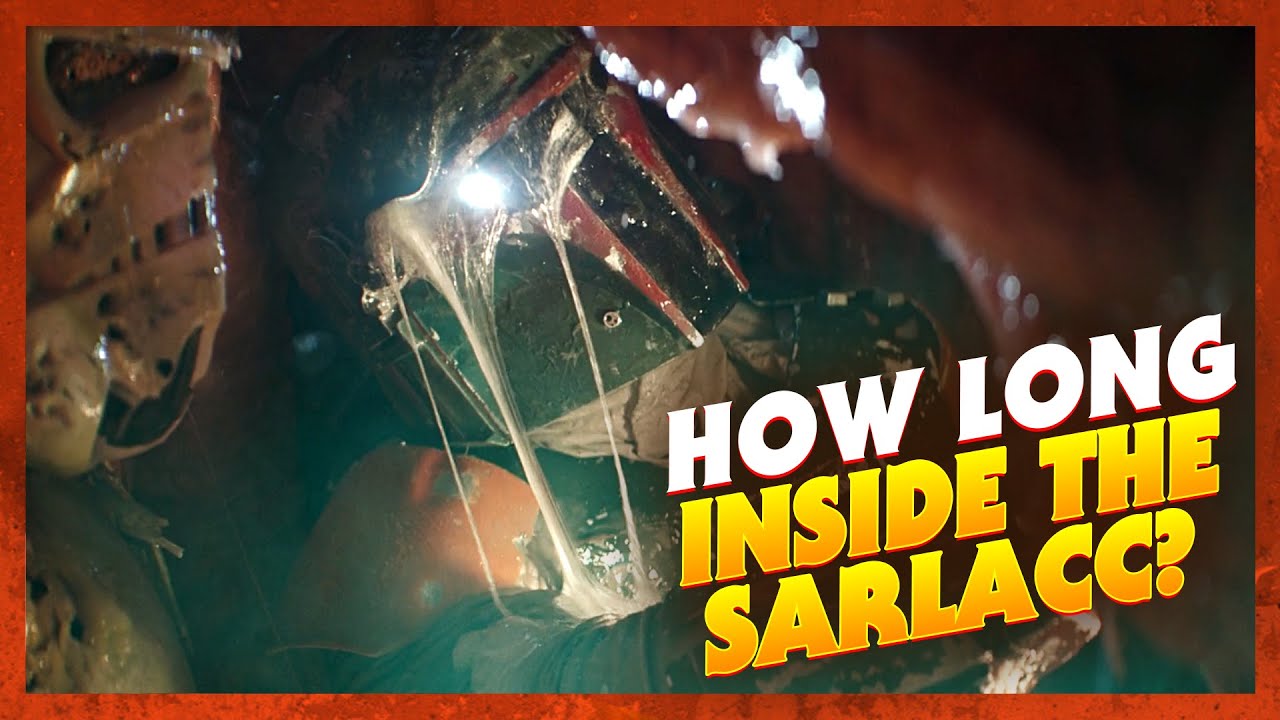The sarlacc first appeared in the 1983 film Return of the Jedi, wherein Jabba the Hutt attempts to drop Luke Skywalker, Han Solo, and Chewbacca into the creature’s mouth; but Luke frees himself and the others with the aid of Lando Calrissian and R2-D2, while Princess Leia strangles Jabba.
According to the Star Wars Databank, the sarlacci inhabit remote, inhospitable locations in the galaxy, but defy taxonomic classification, in so far as most texts claim that the sarlacc is an arthropod (as in The Essential Guide to Alien Species and The Wildlife of Star Wars), while its anchored root system and spore-based method of reproduction suggest a plant origin.[3] A sarlacc reproduces by releasing spores through outer space, which arrive on a planet or asteroid, and there excavate a pit to capture prey.
Steve Sansweet‘s Star Wars Encyclopedia describes the sarlacc as an «omnivorous, multi-tentacled creature with needle-sharp teeth and a large beak». The sarlacc rests at the base of a giant pit where the entirety of its body is buried except for the gaping mouth, which may reach three meters (10 feet) in diameter. The sarlacc uses its four legs to anchor itself underground. Astrophysicist and science fiction author Jeanne Cavelos compares the sarlacc’s hunting method to that of the antlion. The sarlacc’s mouth also has similarities with that of the lamprey.
Because most sarlacci inhabit isolated environments and rely on prey to stumble into their pit, they rarely feed; the digestive system dissolves prey into nutrients over a period of several thousand years.[3] If no living prey is available, a sarlacc relies on its root system to absorb nutrients. One sarlacc located on an airless moon feeds on cometary material rich in oxygen, hydrogen, carbon, and nitrogen.
The sarlacc’s stomach is lined with vessels that attach themselves to a swallowed victim and maws for quick digestion or breaking apart large prey. The maws close when exposed to bright lights. The stomach also contains neurotoxins, which induce hallucinations in prey which «suggest that the sarlacc somehow absorbs the intelligence of all its victims, who live on in disembodied torment». A sarlacc can communicate with its victims through this stolen consciousness: In one Star Wars short story, an unnamed Jedi explains that «sarlacci do interesting things with messenger RNA: over the course of millennia, they can attain a sort of group consciousness, built out of the remains of people they’ve digested. I talked to such a sarlacc, once a few decades ago».
A Jawa with the spore of a sarlacc from «Fortune, Fate, and the Natural History of the Sarlacc», Star Wars Tales 6 (2000).
In the anthology Tales from Jabba’s Palace (1995), edited by Kevin J. Anderson, Dan’l Danehy Oakes‘s story «Shaara and the Sarlacc: The Skiff Guard’s Tale» is told by one of Jabba the Hutt’s soldiers, who tells Boba Fett that his sister Shaara and her Imperial stormtrooper captors were thrown into the pit, whereupon the sarlacc swallowed the stormtroopers, but expelled Shaara, for reasons unknown. In the short story «A Barve Like That: The Tale of Boba Fett», by Daniel Keys Moran under the pseudonym of J. D. Montgomery, Boba Fett struggles to free himself from the belly of the sarlacc. As Fett is digested, the creature converses with him mentally in the voice of an alien named Susejo, eaten by the sarlacc four thousand years earlier. Having caused his jet pack to explode, Fett uses a concussion grenade to blast himself free. Years later, Fett is recognized by the sarlacc upon approach.
In the non-canonical Dark Horse comic book «Fortune, Fate, and the Natural History of the Sarlacc», written by Mark Schultz and illustrated by Kellie Strom, the sarlacc seen in Return of the Jedi is the offspring of an older sarlacc on Tatooine. Shortly after the execution of an unknown alien named Grubbat Fhilch, the sarlacc releases a spore that attaches to an Imperial stormtrooper‘s dewback. The stormtroopers hire a group of Jawa scavengers to clean the dewbacks, from which one jawa acquires the spore, and places it in a jar of water. The young sarlacc escapes from the jar only to be swallowed by a spider-like creature, which it consumes from within, and later forms the Great Pit of Carkoon.
Sarlacci have made minor appearances in Star Wars video games such as Super Star Wars (1992), Shadows of the Empire (1996), Star Wars: Demolition (2000), Star Wars: Bounty Hunter (2002), Star Wars Rogue Squadron III: Rebel Strike (2003), and Star Wars: Battlefront (2004). The MMORPG Star Wars Galaxies (2003) shows one of the smaller sarlacci in the Star Wars galaxy on the remote planet Dathomir. It has also made an appearance in Lego Star Wars II: The Original Trilogy, Lego Star Wars: The Complete Saga, Star Wars: Empire at War, MMORPG Star Wars: The Old Republic and Star Wars: The Force Unleashed (2008), where a sarlacc much larger than the one on Tatooine is first an ally of a Jedi Knight, and later used as a base for the Empire (even building structures inside the creature itself). A duel is fought beside the sarlacc in this game between Starkiller and Shaak Ti, until Ti falls backwards into the sarlacc’s open mouth. The Rise Against the Empire playset of Disney Infinity 3.0 (2015) has the famous Sarlacc and Pit of Carkoon outside Tatooine, around which stand several Jawa, and the player can pick up a Jawa to throw in.
In Super Star Wars, the «Sarlacc Pit Monster» acts as a boss early into the game. It is depicted as a large, worm-like creature with tentacles, and shoots rocks at Luke.
The first episode of The Book of Boba Fett shows a scene of the title character inside the sarlacc’s innards, as he breathes from a dead stormtrooper‘s respirator and escapes from the pit by blasting through with his flamethrower. In episode four, The Gathering Storm, the sarlacc is killed by a seismic charge dropped by the Slave I.

